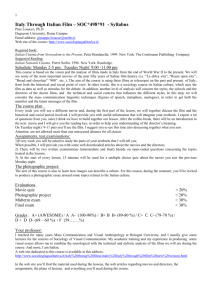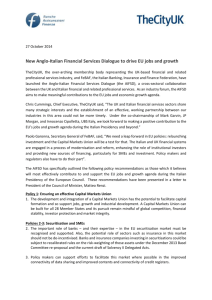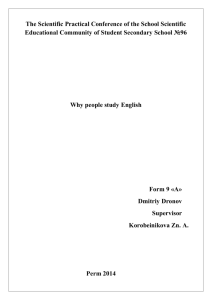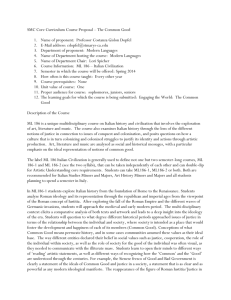File
advertisement
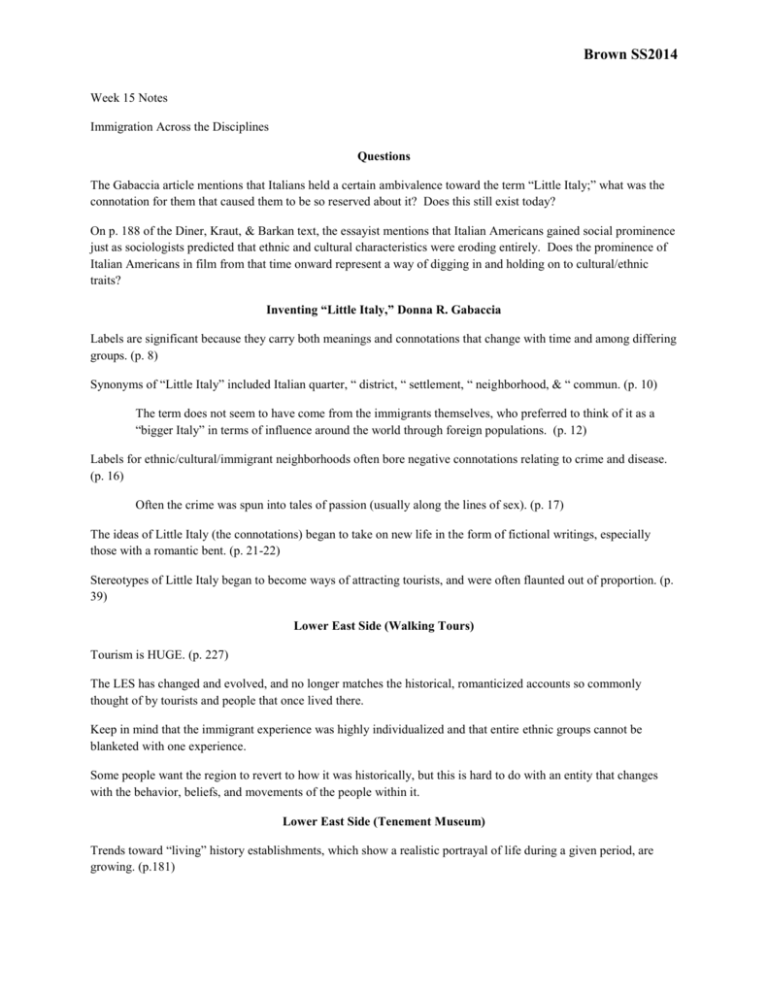
Brown SS2014 Week 15 Notes Immigration Across the Disciplines Questions The Gabaccia article mentions that Italians held a certain ambivalence toward the term “Little Italy;” what was the connotation for them that caused them to be so reserved about it? Does this still exist today? On p. 188 of the Diner, Kraut, & Barkan text, the essayist mentions that Italian Americans gained social prominence just as sociologists predicted that ethnic and cultural characteristics were eroding entirely. Does the prominence of Italian Americans in film from that time onward represent a way of digging in and holding on to cultural/ethnic traits? Inventing “Little Italy,” Donna R. Gabaccia Labels are significant because they carry both meanings and connotations that change with time and among differing groups. (p. 8) Synonyms of “Little Italy” included Italian quarter, “ district, “ settlement, “ neighborhood, & “ commun. (p. 10) The term does not seem to have come from the immigrants themselves, who preferred to think of it as a “bigger Italy” in terms of influence around the world through foreign populations. (p. 12) Labels for ethnic/cultural/immigrant neighborhoods often bore negative connotations relating to crime and disease. (p. 16) Often the crime was spun into tales of passion (usually along the lines of sex). (p. 17) The ideas of Little Italy (the connotations) began to take on new life in the form of fictional writings, especially those with a romantic bent. (p. 21-22) Stereotypes of Little Italy began to become ways of attracting tourists, and were often flaunted out of proportion. (p. 39) Lower East Side (Walking Tours) Tourism is HUGE. (p. 227) The LES has changed and evolved, and no longer matches the historical, romanticized accounts so commonly thought of by tourists and people that once lived there. Keep in mind that the immigrant experience was highly individualized and that entire ethnic groups cannot be blanketed with one experience. Some people want the region to revert to how it was historically, but this is hard to do with an entity that changes with the behavior, beliefs, and movements of the people within it. Lower East Side (Tenement Museum) Trends toward “living” history establishments, which show a realistic portrayal of life during a given period, are growing. (p.181) Brown SS2014 If audience members believe that performers actually ARE the people they portray, then the goal is achieved. True tenements are rare because of housing laws that resulted in their demolition or remodeling. (p. 183-184) While the LES is traditionally viewed as a Jewish historical neighborhood, its real history is one of ethnic interactions and interdependence. (p. 191) Lower East Side (Restaurants) Food is a huge source of cultural and historical memory in LES. (p.213-214) This is especially true for Jews, and all kinds of meanings are attached to food. (p. 222) Barkan, Diner, & Kraut Chapter 8 The Importance of Being Italian: Italian Americans in American Popular Culture: 1960s to 1990s The release of “The Godfather” catapulted Italians & Italian Americans into mainstream American popular culture. (p. 185) Mysteriously, nothing about how they were represented in film had changed, and most actual Italian Americans at that time had become almost entirely integrated into the American mainstream. (p. 186) As Italian Americans grew more comfortable with traditional American life, they became better able and more comfortable with such activities as being in films and the arts; this lead them to even greater familiarity that allowed them to finally put forth their personal stories on screen. (p. 189) Italian Americans as they were in that time period were not depicted in film; film characters were romanticized and represented the past (both distant and not so distant) of them as an ethnic group. (p. 191) This has created the stereotype (still persistent today) of Italian Americans and their close, passionate family ties. (p. 191) Italian Americans in film were characterized by two key aspects: 1. 2. Primitive: they operated on a basic, primal level, satisfying their desires and reacting without thought. (p. 191-192) Anthropological other: ritualized mentality; strong devotion to family, neighborhood, and gang, each harkening to a primitive aspect of “early” culture. (p. 192) While mainstream Americans were trying to identify themselves, they saw in Italian Americans a sense of self and confidence, a surety of self, that they envied and thus lead to Italian American prominence in film. (p. 194) Especially powerful was the expressed idea that the government was corrupt and not to be trusted, a viewpoint stereotypically applied to Italian Americans and favored by mainstream Americans. (p. 199-200) This rising stereotype made it difficult for many Italian Americans to maintain high social/political status. (p. 206207)
